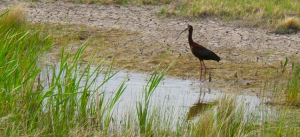
By Michael Kelly, Communications Director
The following statements are dead wrong
The referenced media source is missing and needs to be re-embedded.
EPA - protecting our water1. “This could be the EPA’s most dramatic power grab ever…” – Steve Doocy, Fox News 2. “The EPA is redefining the meaning of the word water so as to give it, the EPA the ability to regulate ever body of water in the US, whether it is a little stream or whether it is a free standing pond.” – Andrew Napolitano, Fox News
Wrong. Wrong. Wrong. These two Fox pundits are referring to the Environmental Protection Agency’s (EPA) forthcoming proposal to protect the drinking water for nearly one-third of all Americans. EPA will soon propose this rule because, right now, that drinking water is at risk. The small streams and wetlands that feed our drinking water supplies are at risk now because of pressure from polluters and policy decisions made by the Bush Administration in the mid-2000’s. Not only do these wetlands and streams feed drinking water sources, they help us deal with floodwaters and EPA is simply trying to restore protections to these vital water resources and make the Clean Water Act work the way it has since 1972. And they have the science to back it up. In addition to announcing it will soon propose a new rule, EPA released a comprehensive, peer-reviewed report that documents just how connected our water is. This synthesis of more than 1,000 studies and articles shows that these small bodies of water are vital parts of our water infrastructure and discusses the critical functions they perform. The conclusions are commonsense – what happens in upstream streams or wetlands affects the entire watershed downstream. Visit this page to send a note to EPA to support the science report. EPA does not want to regulate every body of water in the country. In fact, the Agency has clearly stated exactly what it wants to protect and what it will not regulate through this rule. Here’s a short list of exemptions from current law and the forthcoming proposed rule. Exemptions from Clean Water Act permitting continue for:- Agricultural stormwater discharges.
- Return flows from irrigated agriculture.
- Normal farming, silvicultural, and ranching activities.
- Upland soil and water conservation practices.
- Construction and maintenance of farm or stock ponds or irrigation ditches.
- Maintenance of drainage ditches.
- Construction or maintenance of farm, forest, and temporary mining roads.
- Prior Converted Cropland, including the role of USDA.
- Waste Treatment Systems.
- Non-tidal drainage, including tiles, and irrigation ditches excavated on dry land.
- Artificially irrigated areas that would be dry if irrigation stops.
- Artificial lakes or ponds used for purposes such as stock watering or irrigation.
- Areas artificially flooded for rice growing.
- Artificial ornamental waters created for primarily aesthetic reasons.
- Water-filled depressions created as a result of construction activity.
- Pits excavated in uplands for fill, sand, or gravel that fill with water.
Related Posts
Stay Informed
Get the latest updates and actions:
Thanks for signing up!
There was a problem processing your signup. Please try again.


